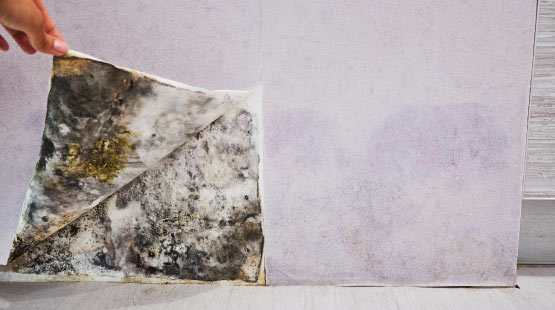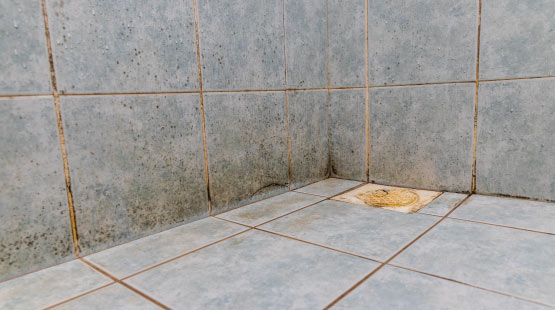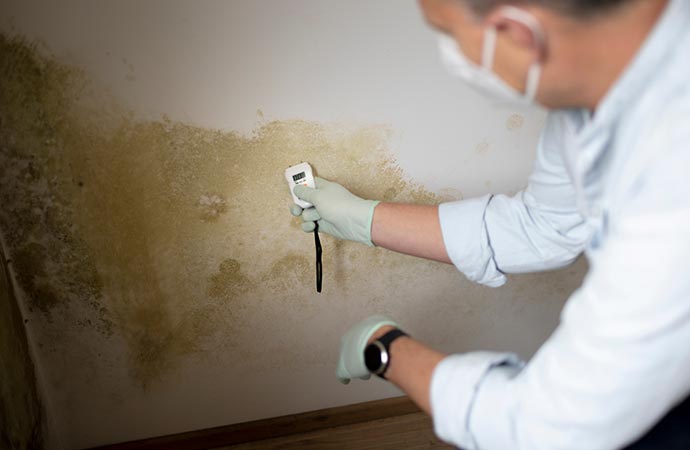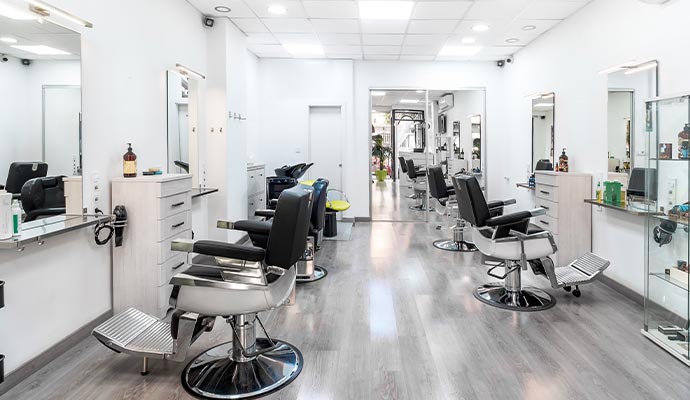24/7 Emergency Services

Where does Mold Hide in Your Home?
Given time, mold growth in a home or workplace occurs under damp, warm conditions. It can spread quickly, aggravate allergies, cause serious breathing issues, illness, and discomfort. It can make a dwelling uninhabitable. Mold is prevalent, but you can minimize its effects in your home. Dalworth Restoration has the most cleanup, removal and remediation experts to restore your home's air quality, safety, and comfort. Let us be your No. 1 solution for mold growth, and find out more here about this serious indoor hazard.
Find Out The Hidden Places For Mold in Your Home
When you least notice, mold thrives in less obvious areas of homes before becoming a visible problem. Knowing where mold hides helps you tackle it effectively and maintain a healthier living environment. Where does mold commonly lurk, and what can be done to mitigate its presence.
1. HVAC drain pans
The damp environment of HVAC drain pans provides the perfect breeding ground for mold. Regular cleaning and maintenance of your HVAC system can help prevent mold growth here.
2. Carpets
Moisture from spills, leaks, or high humidity can seep into carpets, fostering mold growth beneath the surface. Promptly addressing spills and ensuring proper ventilation can help prevent mold from taking hold.
3. Hidden water damage
Hidden behind walls, cavity spaces can trap moisture from leaks or condensation, leading to mold growth. Inspecting for water damage and addressing any issues promptly can help prevent mold from spreading within your walls.
4. Masonry
Cracks or gaps in masonry surfaces can allow moisture to penetrate, creating an ideal environment for mold growth. Regular inspection and maintenance of masonry structures can help prevent mold from thriving.
5. Surface moisture
Moisture trapped behind plaster, paint, drywall, wallpaper, or other areas prone to humidity like bathrooms or kitchens, can promote mold growth. Proper ventilation and addressing any signs of water damage promptly can help mitigate this risk.
6. Attics
Poor ventilation in attics can lead to moisture buildup, promoting mold growth on insulation, wood, or other organic materials. Ensuring adequate attic ventilation and addressing any leaks or condensation can help prevent mold from spreading.
7. Washing machines
Moisture from washing machines can lead to mold growth in areas like rubber seals, detergent drawers, and drainage pipes. Regular cleaning and maintenance of your washing machine can help prevent mold buildup.
8. Ceiling tiles
Leaky commercial roofing or plumbing fixtures above ceiling tiles can result in moisture accumulation and mold growth. Inspecting for leaks and promptly repairing any water damage can help prevent mold from spreading to ceiling tiles.
9. Chimneys
Chimneys can develop mold growth due to moisture intrusion from rain or condensation. Regular chimney inspections and addressing any leaks or cracks can help prevent mold from proliferating.
10. Window sills
Condensation can collect on window sills, providing a moist environment for mold to grow. Wiping away condensation regularly and ensuring proper ventilation can help prevent mold buildup on window sills.
Why is Mold Remediation Important?
Mold growth can make a home or business uninhabitable. Inspection, assessment, cleanup, and removal are essential, along with measures to prevent future mold growth. This mold remediation is crucial for the following reasons:

- Mold can trigger allergies, asthma attacks, respiratory infections, and other health issues. Mold removal helps address these health problems and promotes a safer indoor environment.
- Mold can affect a property's structural stability over time, weakening walls, ceilings, floors, and other surfaces. Mold remediation prevents further structural damage.
- Mold can significantly decrease the value of a property. Mold remediation can help maintain or even increase property value.
- Mold spreads throughout a property if not properly contained during remediation. Timely and thorough mold removal prevents spread to unaffected areas.
- Property owners are often required by law to maintain safe and healthy living or working conditions for occupants. Failure to address mold issues can result in liability.
Where to Check for Mold in Your Bathroom?
Bathrooms are the perfect mold breeding ground with damp, warm environments. Lack of window or fan ventilation can add to the problem. Mold can be easy to spot here, or it can collect in less obvious spots. Common affected areas include:
- Shower and bathtub: These spots are often wet and perfect for mold. If you don't air out the bathroom well after bathing, mold can grow. Look for mold on shampoo bottles, washcloths, shower curtains, faucet edges, and grout between tiles.
- Sink and toilet: Water and humidity in bathrooms make sinks and toilets prone to mold. Check the sink surface, counters, toothpaste holders, and behind and underneath the toilet. Moisture from cleaning supplies can also lead to mold growth.
- Walls and floor: Mold can hide in walls and floors, especially near leaks. Watch out for water stains or damp spots. Even bathroom rugs can harbor mold if they're not cleaned often.

Keeping your bathrooms free of mold growth
- Use a fan while showering and leave it running afterwards.
- Use a dehumidifier or air conditioner to reduce humidity.
- Keep all surfaces dry and clean.
- Fix any leaky faucets or pipes ASAP.
Trust Dalworth Restoration to Reveal and Remediate Hidden Mold
Mold remediation and removal is a crucial step in maintaining a healthy and safe home environment. Let us assist you in Dallas, Fort Worth, Arlington, Grapevine, and cities throughout Dallas-Fort Worth to prevent health risks and structural damage related to mold.
Trust our effective mold remediation solutions for your needs. Don't let mold compromise your well-being and property stability. Call 817-203-2944 or contact us online for an appointment with a Dalworth mold removal and remediation specialist.













